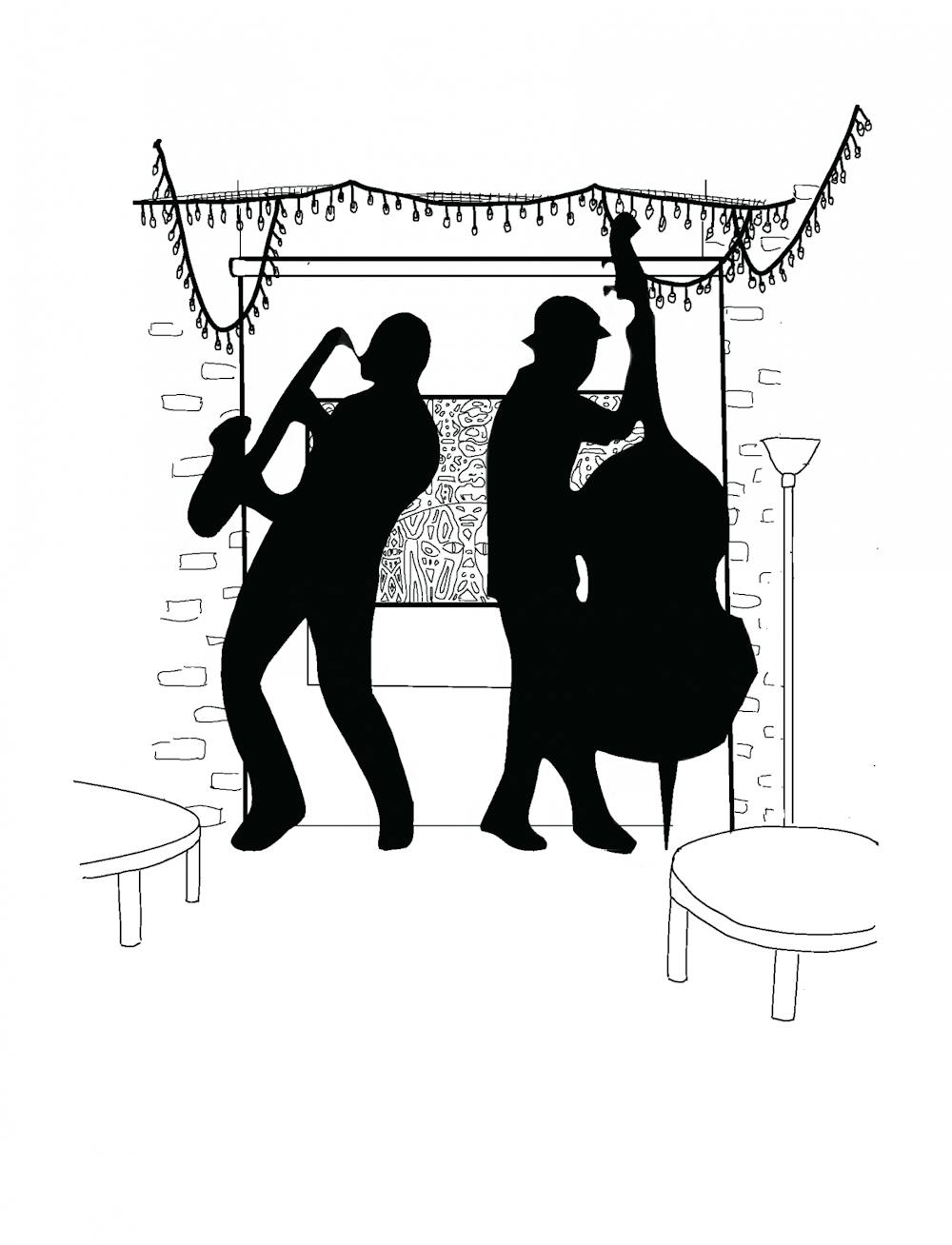By day, the Underground of the Stephen Robert ’62 Campus Center serves as a meeting place for students interested in cheap coffee and high-decibel, trendy music. But every other Wednesday night, the Spotify playlists are paused and tables are pushed to the side to make space for jazz aficionados, casual fans and everyone in between.
Paused while campus COVID-19 restrictions were in effect, “Jazz Jams” were revived in the fall by students eager to foster an open performance space for student musicians, said Alejandro Ingkavet ’24, one of the series’ organizers and social media director at The Herald. Drawing crowds that fill the Underground, the events have been part of a broader on-campus reintroduction of live performances post-pandemic, he added.
“In one night, you’ll have about 20 to 25 musicians swapping in and out,” Ingkavet said. “This is a really important place for anyone interested in jazz.”
True to the spirit of jazz music, the events have a loose structure and plenty of room for improvisation. The songs performed, which are suggested beforehand via Google Forms, come from a selection of well-known jazz standards. Then, the stage is opened to any musician who wants to perform, Ingkavet said. A typical song features up to 10 musicians playing a variety of instruments. According to DJ Pennix ’25, a frequent “Jazz Jams” performer, one musician even managed to play the flute, bass, pocket trumpet and clarinet in a single solo.
The events’ open structure allows space for new instruments, performers and costumes, Ingkavet added.
“A lot of clubs have open jazz jam nights, and we’re replicating that in some way,” Ingkavet said. “But because the events are student-run, everyone feels more free in their ability to perform.”
For some student performers, “Jazz Jams” provide an opportunity to step outside the norms of jazz performance in a low-stakes environment.
“Last ‘Jazz Jams,’ I performed ‘Bella Notte’ from ‘Lady and the Tramp’ in a goat costume,” said singer Emma Giventer-Braff ’23. “People thought it was a hoot because it was lighthearted and funny. If I did that during jazz combo, I’m sure the jazz directors would give me an evil eye.” Formal jazz combos take place within the University’s Jazz Band program, according to the Music Department website.
A palpable sense of community also contributes to the openness of the event, Pennix said. That community, which brings together students interested in jazz from all class years, was crucial for Pennix in the fall during his first semester on campus. After performing at similar events in high school, Pennix was struck by Brown students’ support for all levels of musicians.
“No matter what you would do, (the crowd) would always cheer for you and make you feel like you belong there,” Pennix said. “Beginners would come and experiment in front of a crowd. And they didn’t feel like they needed to prepare or have a certain level of talent.”
Often, when the set list runs out, one student will begin to play a lick and other performers will gradually join, Pennix said. The end result, he added, is a space where “even people who were scared to go up for the planned set list were able to solo in the end.”
Given the low-stakes nature of the events, Giventer-Braff said “Jazz Jams” tend to create a relaxed atmosphere among the crowd. When she attends these events, she alternates between doing homework on her laptop and singing on stage. That environment makes “Jazz Jams” unique both on campus and in the greater world of jazz music, she said.
The environment at “ ‘Jazz Jams’ is more authentic jazz. Jazz combo is jazz music, but jazz is best in a relaxed setting. I want to dance — that’s what jazz is,” Giventer-Braff said. In the Underground, “it wouldn’t be out of place to do so.”





